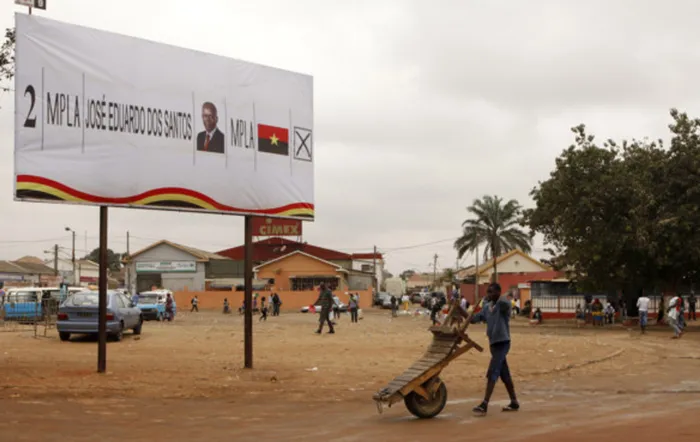Angola’s MPLA has been in power for nearly 50 years. The big challenges they must fix

File picture: Siphiwe Sibeko/Reuters
By Cristina Udelsmann Rodrigues
Angolan president João Lourenço, who has been returned to power with a greatly reduced majority, faces the challenging task of turning around the economy and improving the living conditions of the majority, particularly young people.
The Angolan economy has been in bad shape since 2014 when oil prices declined. Oil looms large over the economy, accounting for more than 90% of exports, 56% of government revenues and almost 35% of overall economic output.
Even some of its non-oil sectors such as construction and agriculture move in tandem with the oil sector, according to the International Monetary Fund. This makes the country’s efforts to diversify the economy that much more challenging.
The poor economic outcomes are visible in increasing levels of unemployment, especially among young people and in the urban areas. This has pushed most Angolans – particularly women – into low productive informal jobs. More than 80% of the Angolan population relies fully or partially on the informal economy.
Angola’s economic performance loomed large over the election, explaining why young people have become the symbol of the destitute citizens. Angola has a youthful population with a median age of 16.7 years.
Angolan youth have borne the brunt of the 30 years’ civil war which ended in 2002. Most of the half a million who died were young fighters. The civil war left those who survived it with no education, no social or economic structures. The oil-based economy has created only residual employment opportunities to the low-skilled young people. Forced migration to urban areas during the war meant breaking social ties.
Young voters, who now represent about 60% of the voting population under 24, would have played an important role in shifting the electoral balance away from the People’s Movement for the Liberation of Angola (MPLA), which has run the country since independence in 1975. The call for change in these elections mobilised the younger urban voters more than any other, with visible interventions on the streets and in social media.
The MPLA won 51.17% of the vote and its historical rival, National Union for the Total Independence of Angola (Unita), got 43.9%. In the 2017 elections the distribution was 61.1% for the MPLA and 26.7% for Unita.
Significantly, the latest poll saw the MPLA lose the nearly two-thirds majority it had enjoyed in the three previous elections since the end of the civil war in 2002. Explanations are mainly concentrated on discontentment with the economy and living conditions.
It’s the economy
The prolonged economic recession triggered in 2015-16 by falling oil prices and aggravated by the Covid-19 pandemic and declining oil production, deeply affected the everyday lives of Angolans. With the majority of the population depending on low-profit, unprotected informal activities, the crisis affected a high number of families, who had to cut down on expenses such as education and health.
Now that the MPLA has been returned to power, it will have to deal with this particularly challenging situation. It will have to work hard and seriously commit to reversing the negative trends. What was difficult to improve in the last mandate will certainly be even more difficult in the next five years.
On the positive side, despite the difficulties, oil prices are on the rise again, and investors may be coming back to the country. Covid-19, which practically suspended the economy, in particular the urban informal traders, is slowly disappearing from people’s minds and daily lives. This will mean working harder but in a better economic context.
Youth factor
It is a challenge, in the coming five years, to satisfy the large, youthful part of the voting population, who are more active and can move around and mobilise using new, less controlled means of communication.
Their most urgent need is employment and a perspective of life beyond the precarity of the informal economy. Unemployment among the youth (15-24 years) was at nearly 60% in 2021. Women are particularly left behind in this economic context, with a very low rate of participation in industry, and mostly relegated to agriculture (62.5%) and services (36.2%) .
Generally with low education and skills, young men and women have little chance of getting their ideal job – normally, employment in the public sector, as civil servants. Finding these ideal jobs in Luanda, the capital city, is an even harder quest.
The frustrations resulting from this combination of serious challenges will not be resolved within the five years’ mandate of the party that has won the election.
The future of the Angolan youth was mortgaged a long time ago. In my view, it will take at least another two or three rounds of elections, with all efforts pointed at the youth and the improvement of their social, economic and educational conditions, for matters to improve. It is a long-term horizon, which may not be well accepted by the youth and lead more to leave the country.
If all goes well, if the winners of the next two or three elections can assure an intensive non-stop effort to educate and qualify the youth, they can conquer these key supporters. Until then, they will have to make sure that investments in social, economic and education areas are reaching them primarily.
Rodrigues is a Senior Researcher at the The Nordic Africa Institute
This article was first published in The Conversation.